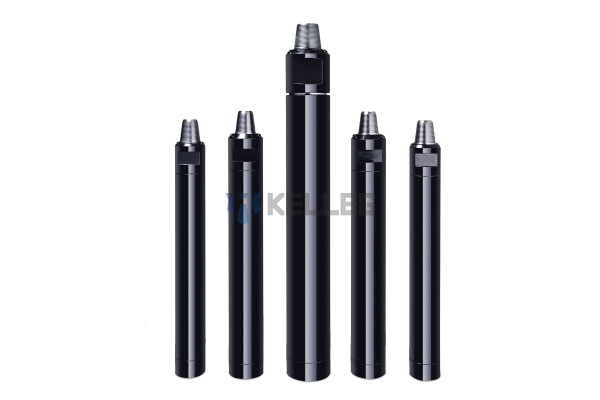2020 官网升级中!现在您访问官网的浏览器设备分辨率宽度低于1280px请使用高分辨率宽度访问。
With the continuous development of the engineering industry, various new technologies and equipment are emerging one after another. Down-the-hole drills, characterized by their efficiency and environmentally friendly drilling capabilities, have found widespread application across many industries.
What is a down-the-hole drill?
A down-the-hole drill is mechanical equipment applied in geological surveys or engineering construction. It can drill on the ground or underwater to obtain geological information or drill holes to complete engineering construction. It is widely applicable in metal mines, hydropower, transportation, building materials, ports, and national defense projects.
Features of down-the-hole drills
Compared with other rock drills, it has the following characteristics:
1. The loss of impact energy does not increase with the extension of the drill rod, enabling the drilling of deep holes with large diameters.
2. Significant reduction in noise levels on the working surface is achieved.
3. The drilling speed is high, mechanization is significant, and auxiliary operation time is minimized, thereby enhancing the operational efficiency of the rock drill.
4. Maneuverable and flexible.
5. High drilling quality.
6. Able to drill medium hard or above medium hard rocks (f≥8).
Working principle of down-the-hole drill
The working principle of the down-the-hole drill is the same as that of other rock drills. It has rock drilling processes such as impact, rotation, slag removal, and advancement, and both belong to impact-rotary drilling. The difference is that the impactor of the down-the-hole drill is installed on the front end of the drill pipe, dives into the bottom of the hole, and continues to advance as the drill hole extends.
Structural components of down-the-hole drill

The DTH hammer is an integral part of the DTH drilling rig to connect the DTH drill bit and drilling rig. It is a working device for the down-the-hole drill. Its quality directly affects the drilling speed and drilling cost. The basic requirements for hammers are high-performance parameters, high drilling efficiency, simple structure, and easy manufacturing, use, and maintenance.
DTH drill bit

The DTH drill bit is a kind of drill tool connecting the impactor with the spline of the drill bit to guide and transmit the rotation energy for the impact, with the drill bit and the DTH hammer diving into the hole to break the rock. DTH drill bits include high, medium, and low air pressure DTH drill bits.
Drilling mechanism
The drilling mechanism is used to control the drill pipe in and out and rotation, including motors, reducers, sprockets, chains, etc.
Hydraulic system
Down-the-hole drills require a hydraulic system to achieve lifting, drilling, rotation, and other actions. The hydraulic system includes hydraulic pumps, hydraulic cylinders, fuel tanks, and pipelines.
Control system
The control system is used to control the operation of the down-the-hole drill, including drilling speed, depth, direction, etc. The control system generally includes the main control panel, remote control, etc.
Support system
The support system is used to fix the down-the-hole drill to ensure the stability of the drilling process. The support system includes the drilling rig base, legs, support frame, etc.
Down-the-hole drills, an efficient drilling equipment, have become a crucial tool in many industries, and their unique working principles and characteristics make them perform well in many application scenarios. With the continuous advancement of science and technology, down-the-hole drills are constantly innovating and developing. In the future, it will bring more surprises and help humans create a better tomorrow.